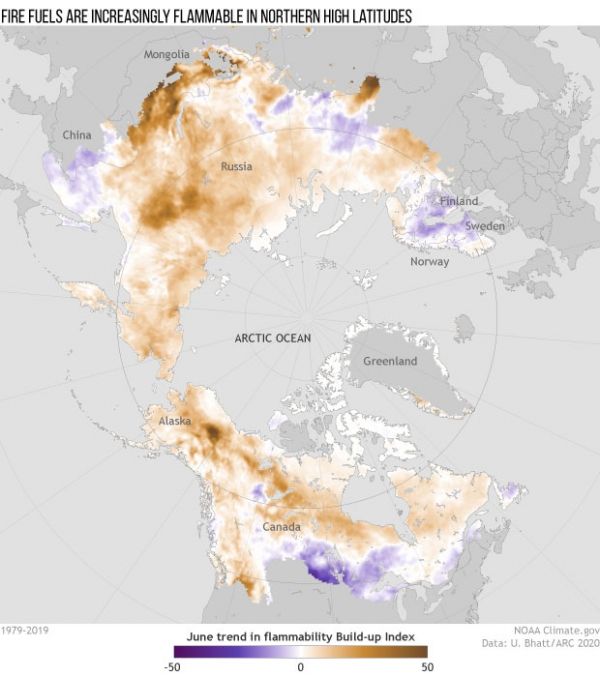In the 2020 issue of NOAA’s Arctic Report Card, experts reported on the evolving wildfire landscape across the taiga—the boggy, coniferous forests that occupy much of the high northern latitudes. Rising air temperature and fuel availability over the past 41 years indicate that conditions in Earth’s largest terrestrial biome are becoming more favorable for intense burning and fire growth.
This image shows the buildup index (BUI) trend in June for the 1979–2019 period. The buildup index, an element of the Canadian Forest Fire Danger Rating System, is a numerical rating of fuel availability for fire consumption. Surface temperature, relative humidity and 24-hour rainfall totals all go into the BUI. Brown colors reflect an increasing trend in the availability of fire fuels, while purples reflect a decreasing trend in fuels.
When the BUI reaches certain levels, fires can burn more aggressively and intensely. The widespread increase in the BUI in June in the higher latitudes of both North America and Asia reflect conditions that are becoming more favorable for fire growth.
Continue reading at NOAA Climate
Image via NOAA Climate


